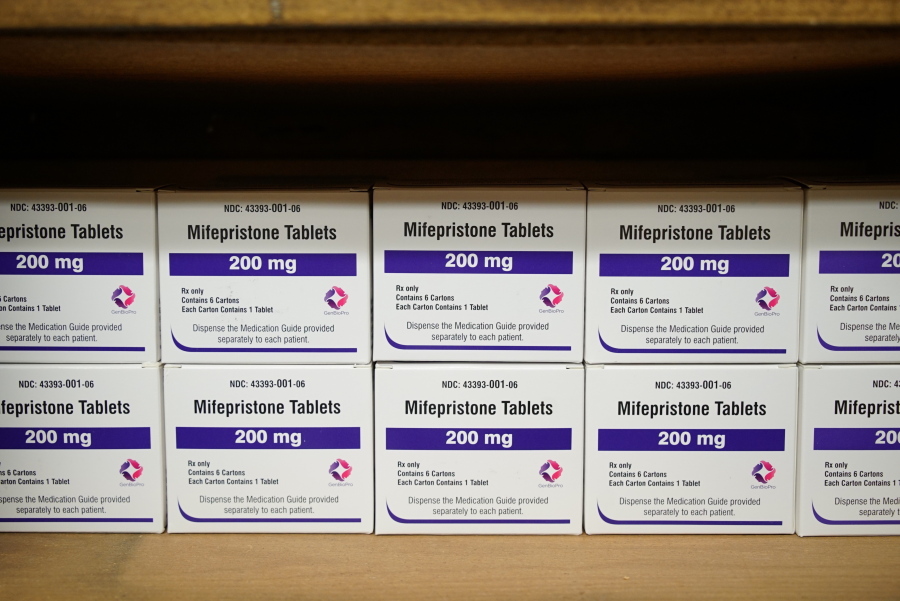Medication abortions became the preferred method for ending pregnancy in the U.S. even before the Supreme Court overturned Roe v. Wade. These involve taking two prescription medicines days apart — at home or in a clinic.
Abortion procedures are an invasive medical technique that empties the womb. They are sometimes called surgical abortions, although they don’t involve surgery.
Abortion by pills involves the drugs mifepristone and misoprostol. As more states seek abortion limits, demand for the pills is expected to grow.
HOW THEY WORK: Mifepristone is taken first, swallowed by mouth. The drug dilates the cervix and blocks the effects of the hormone progesterone, which is needed to sustain a pregnancy.
Misoprostol, a drug also used to treat stomach ulcers, is taken 24 to 48 hours later. The pill is designed to dissolve when placed between the gums and teeth or in the vagina. It causes the uterus to cramp and contract, causing bleeding and expelling pregnancy tissue.
HOW THE DRUGS ARE USED: Abortion medication is approved for use up to the 10th week of pregnancy.
The pills may be taken in a doctor’s office or clinic, where patients sometimes have an ultrasound or lab tests beforehand. Some providers also offer the pills through telehealth visits and then send patients the medication by mail.
Use of the pills has been increasing in recent years. As of 2020, they accounted for 54 percent of all U.S. abortions, according to preliminary data from the Guttmacher Institute. The group’s final estimate is due later this year.
SIDE EFFECTS: Studies and real-use evidence show that when taken together, the pills are safe and up to 99 percent effective. Side effects may include nausea, vomiting and diarrhea.
Bleeding is normal. Very heavy bleeding — soaking more than two pads an hour for more than two hours — is uncommon and requires medical attention.
Dr. Stephanie Rand, a New York OB-GYN and abortion specialist with the advocacy group Physicians for Reproductive Health, says pregnancy tests should not be used right away to determine if a medication abortion was successful because the pregnancy hormone may linger in the body for several weeks. Bleeding, with blood clots that include lighter-colored tissue, is a sign of success, she said.
Serious complications are very rare. The Food and Drug Administration says more than 3.7 million U.S. women have used mifepristone since it was approved more than 20 years ago. The agency has received 26 reports of deaths in women using the medication, including two involving ectopic pregnancies, which grow outside the womb.
The medications are not recommended for certain patients, including those with suspected ectopic pregnancies or with implanted IUD birth-control devices.
COSTS: Costs vary by location but are similar to abortion procedures and may total more than $500. Health insurance coverage varies, with some plans making the pills free or low cost and others not covering them at all.
Mifepristone is sold under the brand name Mifeprex and misoprostol under the brand name Cytotec, but both pills are available as generics.
FEDERAL RULES: The FDA approved mifepristone to terminate pregnancy in 2000, when used with misoprostol. At the time, it imposed several limits on how the drug could be prescribed and dispensed.
In December, the agency dropped the biggest restriction: a requirement that patients pick up the medication in person.



